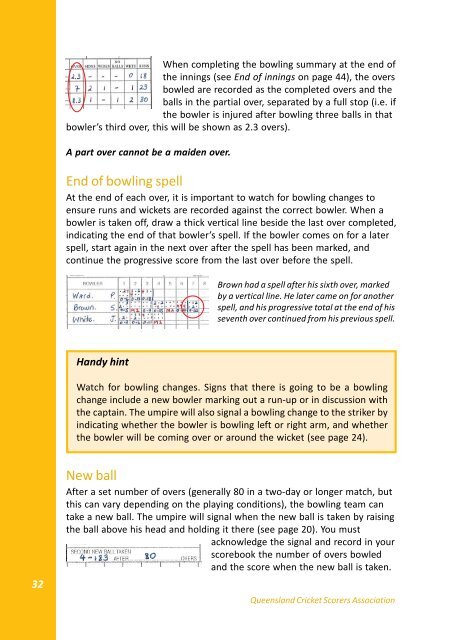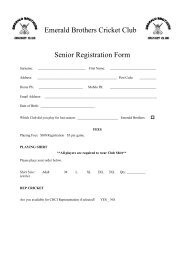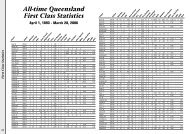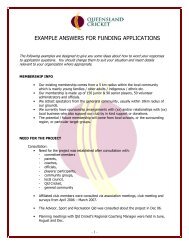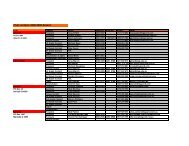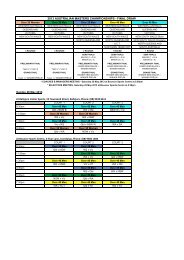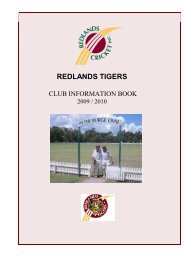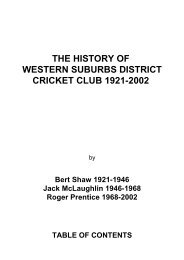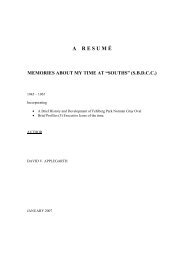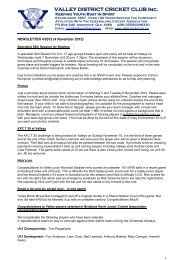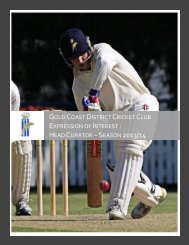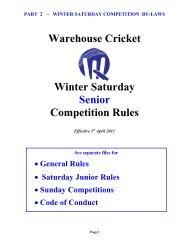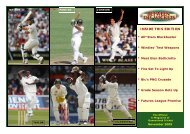QCSA Handbook on scoring 2010 - Queensland Cricket
QCSA Handbook on scoring 2010 - Queensland Cricket
QCSA Handbook on scoring 2010 - Queensland Cricket
- No tags were found...
Create successful ePaper yourself
Turn your PDF publications into a flip-book with our unique Google optimized e-Paper software.
When completing the bowling summary at the end ofthe innings (see End of innings <strong>on</strong> page 44), the oversbowled are recorded as the completed overs and theballs in the partial over, separated by a full stop (i.e. ifthe bowler is injured after bowling three balls in thatbowler’s third over, this will be shown as 2.3 overs).A part over cannot be a maiden over.End of bowling spellAt the end of each over, it is important to watch for bowling changes toensure runs and wickets are recorded against the correct bowler. When abowler is taken off, draw a thick vertical line beside the last over completed,indicating the end of that bowler’s spell. If the bowler comes <strong>on</strong> for a laterspell, start again in the next over after the spell has been marked, andc<strong>on</strong>tinue the progressive score from the last over before the spell.Brown had a spell after his sixth over, markedby a vertical line. He later came <strong>on</strong> for anotherspell, and his progressive total at the end of hisseventh over c<strong>on</strong>tinued from his previous spell.Handy hintWatch for bowling changes. Signs that there is going to be a bowlingchange include a new bowler marking out a run-up or in discussi<strong>on</strong> withthe captain. The umpire will also signal a bowling change to the striker byindicating whether the bowler is bowling left or right arm, and whetherthe bowler will be coming over or around the wicket (see page 24).32New ballAfter a set number of overs (generally 80 in a two-day or l<strong>on</strong>ger match, butthis can vary depending <strong>on</strong> the playing c<strong>on</strong>diti<strong>on</strong>s), the bowling team cantake a new ball. The umpire will signal when the new ball is taken by raisingthe ball above his head and holding it there (see page 20). You mustacknowledge the signal and record in yourscorebook the number of overs bowledand the score when the new ball is taken.<strong>Queensland</strong> <strong>Cricket</strong> Scorers Associati<strong>on</strong>


